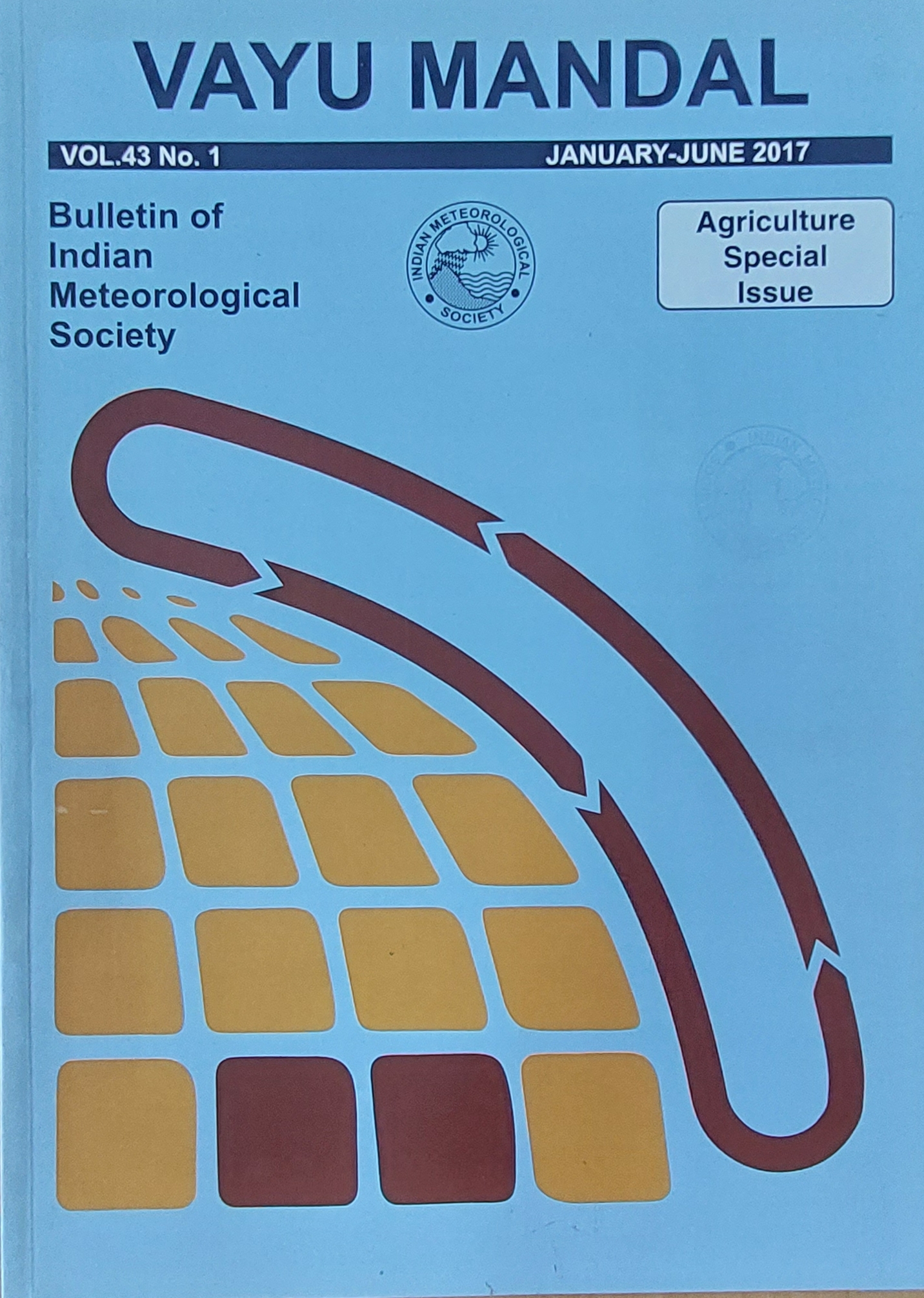Semi Physical Approach for Sugarcane Yield Modelling with Remotely Sensed Inputs
Keywords:
Remote Sensing, Monteith equation, LSWI, KVHRR & Spectral yield
Abstract
Sugarcane, being a cash crop, its yield forecasting is essential for making various agricultural decisions related to price, storage, export/import etc. Hence, the present study was carried out to estimate yield of sugarcane crop using remote sensing technology. This study developed an intermediate method based on the use of remote sensing and the physiological concepts such as the photo-synthetically active radiation (PAR) and the fraction of PAR absorbed by the crop (fAPAR) in Monteith’s radiation use efficiency equation). Net Primary Productivity (NPP) has been computed using the Monteith model and moisture stress has been applied to convert the potential NPP to actual NPP. Sugarcane yield was calculated using the NPP, harvest index and radiation use efficiency. Net Primary Productivity was assessed during the sugarcane crop season of 2015-16. Water stress scalar showed values ranged between 0.01 to 0.2 (Maximum stress) in Bahraich, Saharanpur, Meerut and Muzaffarnagar in the month of April and May as compare to the central and eastern part of Uttar Pradesh. APAR was found higher in western Uttar Pradesh ranged from 35.0 to 73.6 MJ/m2 which gradually decreased in the month of July which ranged between 25.0 - 75.2 MJ/m2. During crop season maximum yield was found between 50-60 t/ha for most of the western districts of Uttar Pradesh.
Published
2024-02-23
How to Cite
Chaurasiya, G., Saxena, S., Tripathy, R., Chaudhari, K., & Ray, S. (2024). Semi Physical Approach for Sugarcane Yield Modelling with Remotely Sensed Inputs. Vayumandal, 43(1), 11-22. Retrieved from https://vayumandal.imetsociety.org/index.php/Vayumandal/article/view/110
Section
Research Paper
Copyright (c) 2024 Vayumandal

This work is licensed under a Creative Commons Attribution-NonCommercial 4.0 International License.
All articles published by VAYUMANDAL are licensed under the Creative Commons Attribution 4.0 International License. This permits anyone.
Anyone is free:
- To Share - to copy, distribute and transmit the work
- To Remix - to adapt the work.
Under the following conditions:
- Share - copy and redistribute the material in any medium or format
- Adapt - remix, transform, and build upon the material for any purpose, even
commercially.


